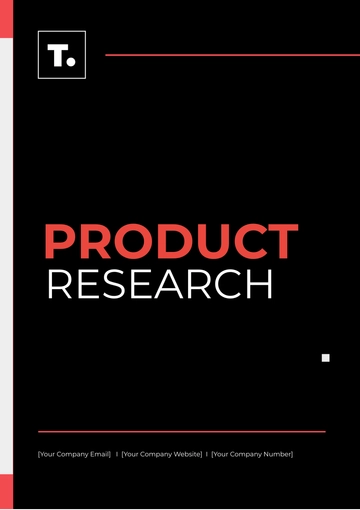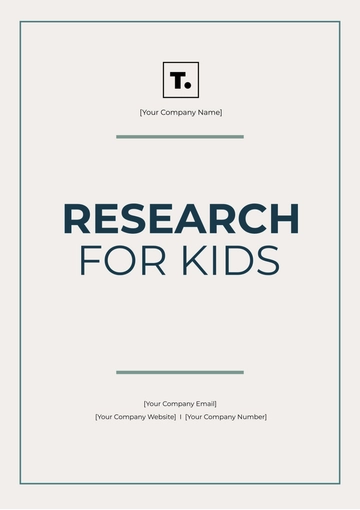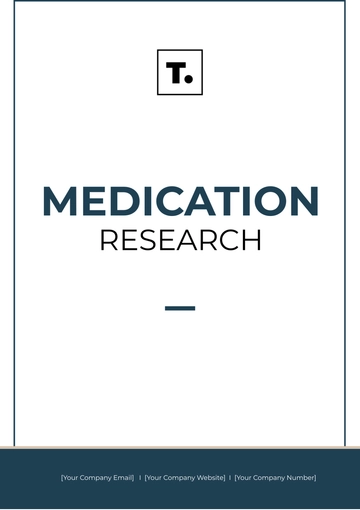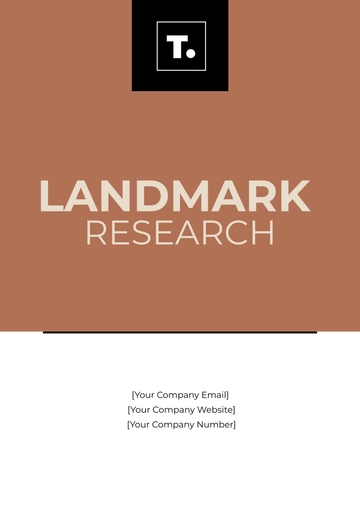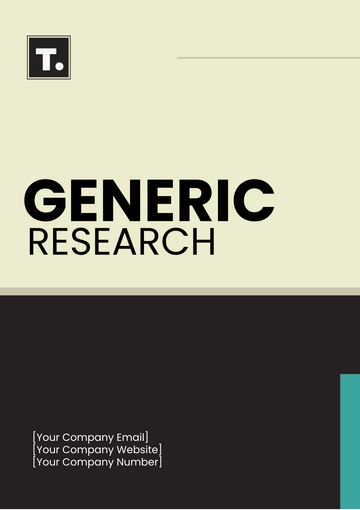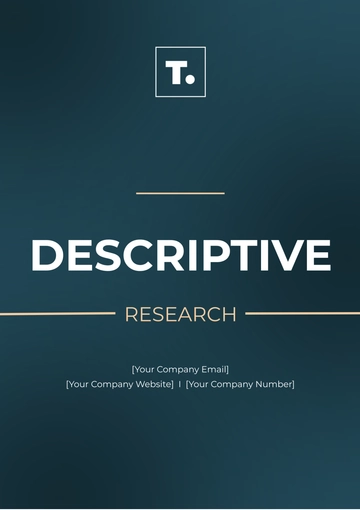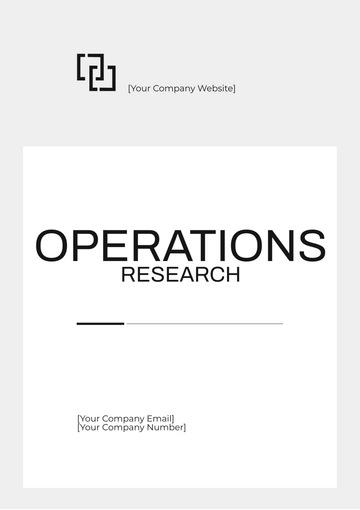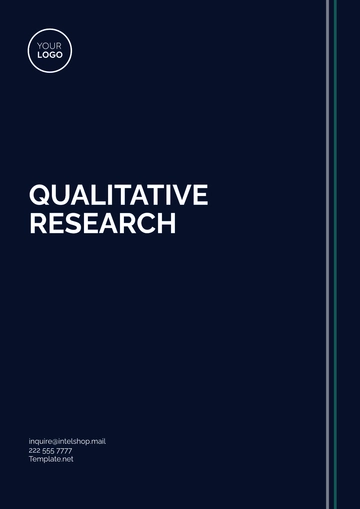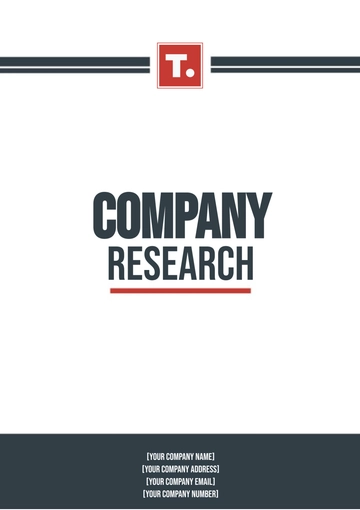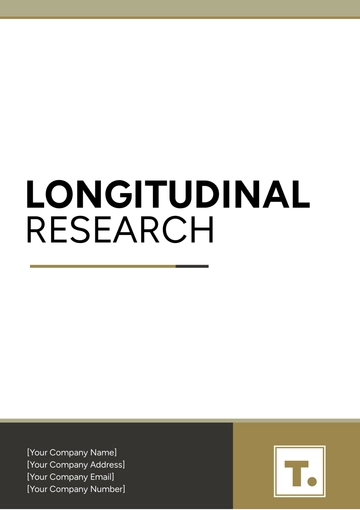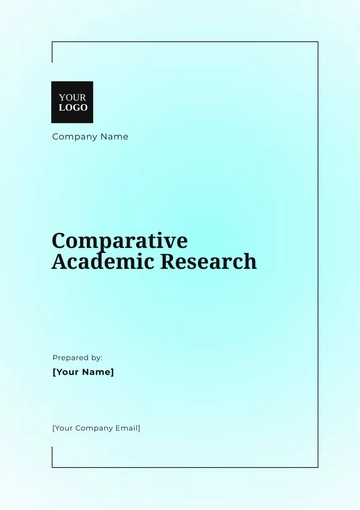Free Sales Client Satisfaction Research
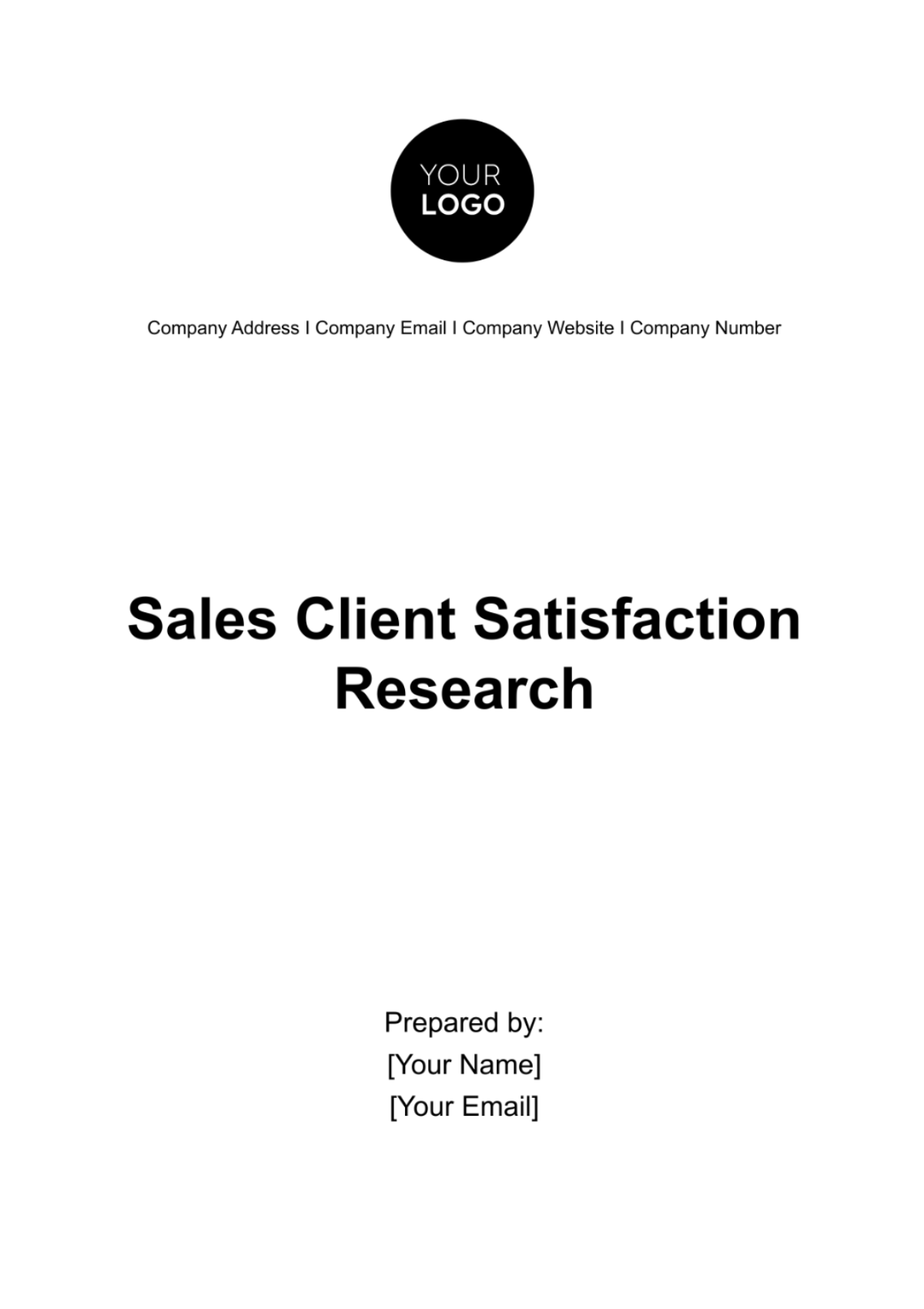
Executive Summary
This Sales Client Satisfaction Research document encapsulates our comprehensive analysis aimed at gauging the satisfaction levels of our clients with our products, services, and overall customer experience. Conducted over a period of three months, the research employed a mixed-method approach, combining surveys, interviews, and focus groups across a diverse sample of 500 clients spanning various industries, sizes, and geographies.
Overall client satisfaction score stands at 85%, indicating a strong positive reception of our offerings and client service practices.
Satisfaction by product line varies, with our flagship product receiving the highest satisfaction rate of 92%, while ancillary services recorded an 80% satisfaction rate.
The value and quality of our services were rated highly, at 88% and 90% respectively, showcasing our commitment to excellence.
A significant insight revealed a discrepancy between client expectations and reality in our after-sales support, marked by a satisfaction score of 75%.
Client loyalty metrics highlight an impressive retention rate of 90%, underscoring the trust and reliability clients associate with our brand.
The analysis underscores our strengths in product quality, value proposition, and client loyalty. However, it also highlights critical areas needing improvement, such as after-sales support and communication efficacy.
Based on these findings, we recommend a series of targeted actions designed to bolster our after-sales support and streamline communication processes. These include the introduction of a dedicated client support portal, enhanced training for our customer service team, and the implementation of a regular feedback loop with clients to proactively address concerns and adapt to their evolving needs.
Purpose of the Research
The primary purpose of this research is to meticulously evaluate and understand the satisfaction levels of our clients with respect to our products, services, and overall engagement experience. By conducting this research, we aim to identify key drivers of satisfaction, pinpoint areas of excellence, and uncover opportunities for improvement. This endeavor is rooted in our commitment to not just meet but exceed our clients' expectations, ensuring we continue to build strong, enduring relationships rooted in trust and mutual success.
Importance of Client Satisfaction in Sales
Client satisfaction is paramount in sales as it directly influences loyalty, retention, and the overall success of the business. Satisfied clients are more likely to repeat purchases, refer new clients, and maintain a positive, long-term relationship with the company. Furthermore, understanding and addressing the factors that contribute to client satisfaction can significantly enhance the value proposition of our offerings, setting us apart in a competitive marketplace. Ultimately, prioritizing client satisfaction leads to enhanced reputation, increased sales, and sustained business growth.
Research Objectives
The objectives of this research are designed to provide a comprehensive understanding of our clients' satisfaction, guiding strategic decisions and improvements. Specifically, we aim to:
Assess the overall satisfaction level of our clients with our products/services.
Identify the satisfaction levels across different product lines and services.
Evaluate the effectiveness of our client service and support.
Understand client perceptions of value and quality in relation to our offerings.
Gauge client loyalty and retention rates.
Collect actionable feedback for areas of improvement.
Methodology
Research Design
Our research design is a mixed-method approach, combining quantitative and qualitative methodologies to gain a deep and nuanced understanding of client satisfaction. This design allows us to quantify satisfaction levels while also exploring the reasons behind these ratings through direct client feedback.
Sample Selection Criteria and Size
The sample for this research was carefully selected to ensure representativeness and relevance. Criteria included clients from various industries, company sizes, and geographic locations who have engaged with our company in the past year. The final sample size comprised 500 clients, providing a robust data set for meaningful analysis.
Data Collection Methods
Online Surveys: Structured questionnaires distributed via email.
In-depth Interviews: One-on-one conversations with a select group of clients.
Focus Groups: Small group discussions to explore specific aspects of client satisfaction.
Tools in Data Analysis
Statistical Analysis Software (SAS)
Text Analysis Tools
Customer Relationship Management (CRM) System
Client Demographics
Our research encompassed a diverse range of clients to ensure a comprehensive understanding of satisfaction across different demographics. This diversity allowed us to draw insights into how various factors such as industry, company size, and geographic location influence client satisfaction. The sample was stratified to include a balanced representation, providing a nuanced view of our client base and ensuring the findings are broadly applicable across our entire spectrum of clients.
Demographic | Percentage |
Industry | |
Technology | 25% |
Healthcare | 20% |
Financial Services | 15% |
Retail | 15% |
Other | 25% |
Company Size | |
Small (1-50) | 30% |
Medium (51-200) | 40% |
Large (201+) | 30% |
Geographic Location | |
North America | 40% |
Europe | 30% |
Asia-Pacific | 20% |
Other | 10% |
Research Findings
Our findings provide valuable insights into client satisfaction across various dimensions of our business.
Satisfaction by Product/Service Line
Product/Service Line | Satisfaction Rate |
Product A | 92% |
Product B | 87% |
Service C | 80% |
Service D | 78% |
Product A stands out with the highest satisfaction rate at 92%, indicating strong approval of its features and benefits. Service C and D, while still favorable, suggest areas for improvement, particularly in tailoring these services more closely to client needs.
Client Perceptions of Value, Quality, and Reliability
Aspect | Rating (out of 10) |
Value | 8.5 |
Quality | 9.0 |
Reliability | 8.7 |
These ratings reflect a strong perception of quality and reliability in our offerings, with quality scoring the highest. The slightly lower value score indicates an opportunity to enhance perceived value through additional communication of benefits or restructuring of pricing models.
Comparison of Expectations vs. Reality
Aspect | Expected | Actual | Gap |
Service Speed | 9.0 | 8.0 | -1.0 |
Responsiveness | 9.0 | 7.5 | -1.5 |
Customization | 8.5 | 8.0 | -0.5 |
The gaps identified between expectations and reality in service speed and responsiveness highlight critical areas for immediate improvement. Enhancing these aspects can significantly boost overall client satisfaction.
Client Loyalty and Retention Rates
Metric | Figure |
Client Retention Rate | 90% |
Repeat Purchase Rate | 85% |
Referral Rate | 80% |
High retention and repeat purchase rates underscore strong client loyalty, a testament to the overall positive client experience. The referral rate, while also high, presents an opportunity to incentivize referrals further to leverage satisfied clients as brand ambassadors.
Analysis and Interpretation
The comprehensive analysis of our research findings reveals several key trends and patterns that are instrumental in shaping our future strategies. Firstly, the high satisfaction rates for Product A and the overall perception of quality and reliability indicate that our commitment to excellence in these areas is resonating well with our clients. However, the identified gaps between expectations and reality, particularly in service speed and responsiveness, highlight a crucial area for improvement. These trends suggest a need for an enhanced focus on operational efficiencies and client communication to bridge these gaps. Furthermore, the variance in satisfaction rates across different product and service lines suggests potential misalignments in client expectations or delivery, warranting a deeper investigation into each offering's value proposition.
Benchmarks and Comparisons
Comparison with Industry Benchmarks
Metric | Our Score | Industry Average |
Client Satisfaction | 85% | 80% |
Product Quality | 9.0/10 | 8.5/10 |
Service Responsiveness | 7.5/10 | 8.0/10 |
Compared to industry averages, our scores in client satisfaction and product quality are commendable, indicating a competitive edge in these areas. However, our service responsiveness score falls short of the industry standard, underscoring an immediate area for improvement to align with or surpass industry expectations.
Comparison with Past Research Results
Metric | Current Year | Previous Year |
Client Satisfaction | 85% | 82% |
Product Quality | 9.0/10 | 8.7/10 |
Service Responsiveness | 7.5/10 | 7.0/10 |
Year-over-year comparisons show an upward trend in client satisfaction and product quality, reflecting positive outcomes from past improvement efforts. However, while there is a slight improvement in service responsiveness, this area continues to lag behind the gains seen in other metrics, indicating that previous initiatives have not fully addressed the underlying issues.
Overall Analysis and Interpretation
The juxtaposition of our findings against both industry benchmarks and our past performance offers a nuanced view of our position in the market. It is clear that while we excel in product quality and overall client satisfaction, there is a critical need to focus on enhancing our service responsiveness to meet and exceed both industry standards and client expectations. This focus not only addresses a direct area of client concern but also represents an opportunity to distinguish ourselves further in a competitive landscape. The positive trends from year to year in most metrics are encouraging, showcasing the impact of our ongoing efforts to improve. However, the consistent feedback on the need for faster and more responsive service delivery underlines an area where more targeted, effective interventions are needed. Moving forward, prioritizing these areas for improvement while maintaining our strengths in product quality will be key to sustaining and enhancing our competitive advantage and client satisfaction levels.
Recommendations
Based on the insights garnered from our Sales Client Satisfaction Research, we propose a series of targeted recommendations aimed at addressing identified gaps and leveraging our strengths to enhance overall client satisfaction. These strategic initiatives are designed to refine our offerings, processes, and client interactions, ensuring we continue to meet and exceed client expectations.
Enhance Service Responsiveness: Implement new technologies and processes to improve response times to client inquiries and issues.
Strengthen Communication Channels: Develop more robust and versatile communication channels to keep clients informed and engaged.
Expand Training Programs: Offer comprehensive training programs for our team to elevate the service quality and ensure consistency across all client interactions.
Customize Client Experiences: Further personalize client experiences based on the insights from the needs assessment to better meet individual client preferences and expectations.
Establish Regular Feedback Loops: Integrate regular, structured feedback mechanisms to capture real-time client insights, facilitating continuous improvement.
Implementation Plan
A structured implementation plan is crucial to turn these recommendations into tangible improvements. The plan outlines the steps, timelines, and responsibilities for each initiative.
Step | Timeline | Responsibility |
Deploy New Technology Solutions | 0-3 Months | IT Department |
Upgrade Communication Channels | 1-4 Months | Marketing Department |
Launch Enhanced Training Programs | 2-5 Months | HR Department |
Initiate Client Customization Projects | 3-6 Months | Client Services Team |
Set Up Feedback Mechanisms | 1-3 Months | Quality Assurance |
Conclusion
The Sales Client Satisfaction Research has provided invaluable insights into our clients' perceptions, experiences, and expectations. Our analysis has highlighted our strengths in product quality and overall satisfaction while identifying critical areas for improvement, notably in service responsiveness and communication. The recommendations and implementation plan outlined in this document are designed to address these areas, ensuring we not only meet but exceed our clients' expectations. By committing to these strategic initiatives, we reinforce our dedication to excellence, continuous improvement, and client-centricity. Implementing these changes will not only enhance our client satisfaction levels but also solidify our competitive position in the market, fostering sustained growth and success.
- 100% Customizable, free editor
- Access 1 Million+ Templates, photo’s & graphics
- Download or share as a template
- Click and replace photos, graphics, text, backgrounds
- Resize, crop, AI write & more
- Access advanced editor
Explore the Sales Client Satisfaction Research Template from Template.net, a pivotal resource for understanding your clients' needs. This editable and customizable template empowers you to conduct thorough research effortlessly. With its design editable in our AI Editor tool, you can easily adapt it to gather valuable insights, ensuring your strategies align with client satisfaction.


